
Exploring Antarctica’s Upside-Down World
Clinging to the underside of ice hundreds of feet thick, strange communities eke out a living, while researchers race to study them before they disappear.
This story originally appeared in bioGraphic, an online magazine about nature and sustainability powered by the California Academy of Sciences
At 3 a.m. on December 31, 2019, the clouds hung low over Thwaites Ice Shelf, on the remote coast of Antarctica. A line of small tents reached into the distance, each flanked by a windbreak of snow blocks, though the air was still. The wan light left no shadows, and no clear horizon between the sky and the white plain that stretched out in all directions.
The tents’ 11 residents would normally be asleep at this time on an austral summer night, eyes covered against the 24-hour daylight, sweaty socks and thermals hanging to dry inches above their heads. But now, most of them, bundled in red and orange parkas, clustered around a metal scaffold.
An electric winch growled as it reeled cable from a hole in the ice. The hole was the diameter of a basketball, but deep. The winch had already pulled in more than a quarter-mile of cable. Dangling at the end, somewhere beneath our boots, was a string of precious instruments.
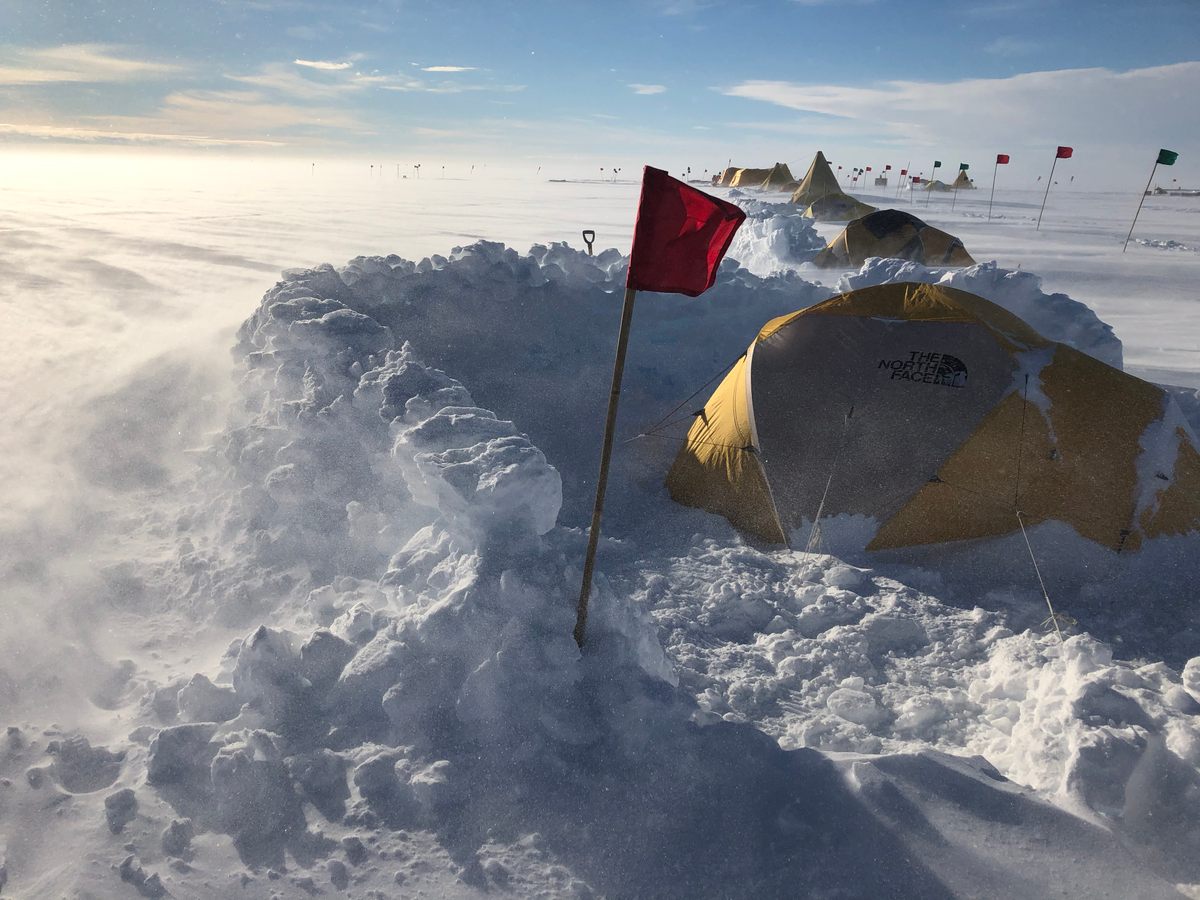
This was a moment of truth that these scientists had waited years for: a chance to glimpse a vast, hidden swath of ocean that humans had never seen.
You wouldn’t have known it from the icy landscape, but we were standing above more than half a mile of water. The Thwaites Ice Shelf—an extension of the West Antarctic Ice Sheet that protrudes from the coastline, 1,000 feet thick in this location and 2,000 square miles in area—floats on the ocean. Ostensibly, the scientists had come to measure currents that are melting this ice from beneath. But they would soon discover something else entirely.
The group was quiet as they drew in their quarry. Erin Pettit, a glaciologist from Oregon State University, clenched a wadded rag around the cable, scraping away the ice. Ted Scambos, a glaciologist from the University of Colorado Boulder, pushed a lever, slowing the winch to get the equipment past a dangerous chokepoint in the hole.
As a video camera enclosed in a steel cylinder rose into view, the group murmured in surprise. A rubbery yellow tendril thin as a shoelace and several yards long dangled from the cable. It was soft and organic—obviously once alive, and utterly at odds with the sterile marine desert that the scientists had imagined below, six miles from the nearest possibility of sunshine.
“This is really weird shit,” said Scambos.
“Alien guts,” muttered someone else, though, in reality, it might have come from a jellyfish.

Back in a work tent, Scambos pored over the camera footage. He is 65 and muscular, with a full white beard and a tangle of brown curls stuffed under a knit cap. At first, the field of view appeared pitch black. But then, one by one, strange creatures flashed through the camera’s lights—krill and shrimp-like amphipods. A frowning, bristle-finned fish, followed by a transparent, eel-like arrow worm. A gelatinous siphonophore drifted by, its delicate lacy skirts rippling in the water. An orange squid darted in, ogled the camera with its saucer eye—then jetted off with a gush of green ink. “Holy smokes!” said Scambos.
“Poor little guy, he’s scared!” said Pettit, the field team’s leader, as she peered over Scambos’s shoulder. Pettit’s cheeks, pink with cold, bore a celebratory “glacial facial”—smudges of seafloor mud that had come up from the hole.
Around 600,000 square miles of ocean—an area larger than Alaska—sit shrouded in perpetual darkness around the edges of Antarctica, beneath ice shelves hundreds of yards thick. These regions are virtually unexplored, and people assumed, until recently, that they harbored little life. But as scientists such as Pettit and Scambos drill through the ice with increasing frequency, they’re encountering plenty of marine animals. And finding them here, in yet another place, added to the growing body of evidence that they’re more than just a random fluke.
The squid, fish, and crustaceans first seen by Scambos and Pettit on that final day of the decade may spend only part of their time under the ice. But the proliferation of animals discovered by another team of scientists from the same U.S.-U.K. collaboration, camped 15 miles closer to land on the ice shelf, clearly represent something more alien.
To see such things “is really remarkable,” says Craig Smith, a seafloor ecologist at the University of Hawaii, who has explored Antarctica’s seas for 20 years. Smith himself has seen plenty of remarkable things. In 1987, he discovered the now-iconic biological hotspots that bloom from whale carcasses that sink to the deep-sea floor. These whale-falls, along with the deep-sea hydrothermal vents discovered in the 1970s, revolutionized Western science’s understanding of how life adapts to extreme environments. Smith puts the discovery of animals under the ice shelves in the same momentous category. “I have no doubt that there are lots of these communities still to be found,” he says. “We’re in the exploration phase. We know very little about what’s down there.”
To modern people who can navigate the globe with the click of a mouse on Google Earth, these Antarctic discoveries raise the refreshing prospect that our world is still mysterious. But climate change means that the scientists must hurry. Antarctica’s ice shelves are melting at an alarming rate—erasing habitat, and life forms, that may not exist anywhere else.
Most of Antarctica’s 18,000-mile coastline is made of ice rather than earth. The continent’s coastal glaciers sit on beds of rock and mud that lay below sea level. As these glaciers ooze toward the ocean, they cross a threshold, called the grounding line, where they peel off the seafloor and float, creating ice shelves anchored to the land. Many of these floating shelves extend less than 50 miles out onto the water. The largest, the Ross Ice Shelf, a thousand miles west of Thwaites, reaches more than 400 miles out over the ocean, covering an area nearly the size of Spain.
Until the mid-2000s, scientists rarely peered below the ice. In 1977, a team of scientists used a high-pressure flame jet to melt a hole through the Ross Ice Shelf, 300 miles back from its edge. In addition to measuring the ocean currents and tides, they also lowered in a camera. Most of the resulting photographs showed empty water, or a blank seafloor. But two revealed grainy outlines of fish, and traps lowered to the seafloor captured more than a hundred amphipods. Still, that wasn’t enough to spur further investigation, says Peter Convey, a biogeographer with the British Antarctic Survey in Cambridge. “There was this expectation that you would see nothing beneath the ice shelves.” No other sub-ice exploration occurred for 27 years.
Part of the problem was that a camera lowered straight down through a hole provided only a narrow view. And ROVs that could move around freely were built like clunky dishwashers—incapable of traveling down a narrow borehole.
Then, an unlikely protagonist named Bob Zook got involved. He was emblematic of the type of raw, oddball talent that Antarctica sometimes attracts. He hadn’t completed high school—having grown bored and dropped out during his senior year in Colorado Springs. But he excelled in chemistry and electronics. As a teenager, he’d spent long hours in the family’s garage, synthesizing a variety of explosives, which he mixed with powdered metals to create colorful fireworks.
Zook spent his 20s and 30s bouncing between Colorado and Russia, working on telecom equipment and backcountry mountain rescues. By 2005, he was 43 years old, working as an electronics technician at McMurdo Station—the main U.S. logistics hub in Antarctica—and married to Stacy Kim, a marine biologist from Moss Landing Marine Laboratories in California, who also worked at McMurdo. The station sits on an island, flanked on one side by seasonal sea ice and on the other side by a thick ice shelf. Kim wanted to explore under the shelf—and in 2005, Zook set out to build a cylindrical ROV that could fit through an eight-inch borehole.
He built his first prototype using a section of PVC sewer pipe, $300 of electronics, and, for buoyancy, empty horseradish jars scavenged from a McMurdo dumpster. In 2008, Zook and Kim lowered Zook’s second-generation ROV, called SCINI, through a crack in the McMurdo Ice Shelf, 50 miles back from its edge. SCINI’s video camera piped back images of deep-sea corals, sponges, jellyfish, and krill. Although Zook and Kim didn’t expect to see so much life this far under the ice shelf, these animals nonetheless resembled the kind of fauna that they often saw in sunlit waters. But in 2010, Zook (by then no longer married to Kim) managed to get footage of something much more surprising.

A team of drillers at a remote field camp had just melted a hole 800 feet through the Ross Ice Shelf, five miles inland from its front, in preparation for retrieving a sediment core from the seafloor. Zook’s objective was mundane: send SCINI down to survey the bottom of the hole, so the drillers could improve their ice-melting techniques.
Instead, he was astonished to find the underside of the ice dotted with upside-down anemones. Tiny crustaceans—possibly amphipods—crawled up and down the anemones’ tentacles.
It wasn’t the first time someone had witnessed this phenomenon. In 1975 two scuba divers had spotted bioluminescent anemones rooted in a submerged wall of ice at Cape Chocolate, 120 miles west of Zook’s location on the Ross Ice Shelf. They attempted to collect a few of the animals by chipping them out of the ice with a metal bar—but each time an animal was dislodged, it shot upward and out of their reach, like a buoyant cork. Their scantly documented discovery ended up buried in a journal article otherwise devoted to glaciers.
Seeing the sprawl of life was “jaw-dropping,” Zook says.
Back in the United States, Marymegan Daly, a biologist at Ohio State University, described the specimens Zook was able to collect as a new species, Edwardsiella andrillae. She found an adaptation that might help them colonize the floating ice—rather than the seafloor where other anemones live. “They have really gigantic eggs, really fatty,” she says. “Those eggs should be buoyant,” allowing them to drift at the very top of the water column, tumbling along the ice ceiling until they take root.
In 2015, Zook sent his third-generation craft, Deep-SCINI, into possibly the most remote pocket of seawater on Earth, at the very back of the Ross Ice Shelf. A team of engineers lowered it down a hole, through a half mile of ice, into a lens of ocean water just 30 feet deep—a staggering 370 miles from the nearest sunlight. To everyone’s surprise, even here, Deep-SCINI captured images of a few fish and amphipods swimming about. But the seafloor itself was barren: strewn with gravel that had fallen from the glacial ice above. These fish and amphipods inhabited a place where ocean currents might take several years to carry in food from the sunlit world. People wondered if they might simply be hapless dead-enders, brought by the current. “They’re scavengers,” Zook speculated at the time, “mostly eating each other’s remains.”
Amid the glimpses of life, all this under-ice work also expanded scientists’ physical understanding of ice shelves. They buttress the edges of the Antarctic Ice Sheet, slowing and stabilizing the flow of glaciers into the ocean. And scientists have come to recognize the ways in which the ocean circulates underneath ice shelves and weakens them, threatening the worlds they sustain.

Deep warm water from farther north slowly creeps along the seafloor toward the submerged fronts of Antarctica’s coastal glaciers. Dense due to its salt content, it flows beneath the ice shelves, eventually reaching the grounding line where the ice first lifts off of the seabed and floats. This inflowing water is three to five degrees Fahrenheit warmer than the glacier’s melting point; it melts the ice that it encounters, and the more buoyant mixture of fresh and salt water then hugs the underside of the ice shelf on its way back to the open ocean.
The Thwaites Ice Shelf in particular is a weak point in West Antarctica. The two teams that set out to melt holes through it in late 2019 were part of the International Thwaites Glacier Collaboration—a major effort by the U.S. National Science Foundation and the British Antarctic Survey to assess the glacier’s health, and forecast its fate. Their work was urgent: Evidence so far suggests that deep seafloor troughs help guide warm water to the Thwaites’ grounding line, and the thinning of the glacier itself pushes the grounding line ever farther back—a combination that allows warm water to move hundreds of yards farther inland each year. An estimated eight cubic miles of ice is vanishing off the ice shelf annually, enough to create a pile higher than New Hampshire’s Mount Washington.
That December, Twin Otter planes ferried Pettit, Scambos, and nine other people, including me, to the middle of the ice shelf. The first task: assemble a hot water drill, with diesel-fired boilers and 1,600 feet of hose, that would melt a narrow aperture through the shelf.
Researchers assembled a similar drill at the other camp, where Britney Schmidt, then with the Georgia Institute of Technology, began preparing her ROV, called IceFin, to explore under the shelf using cameras, sonar, and other instruments.
Schmidt, who recently moved to Cornell University, is a planetary scientist; she has spent much of the past decade studying icy bodies of the outer solar system, including Jupiter’s moon Europa, which harbors an ocean beneath a crust of ice 100,000 feet thick. She is energetic—and at 38 years old, has risen quickly to lead a team of more than a dozen graduate students, postdocs, and engineers. Her group’s development of IceFin—funded in part by NASA—is intended as a first step toward sending a probe to look for life in Europa’s ice-covered ocean.
Schmidt and her team had been building IceFin since 2013; they had spent three years testing it near McMurdo Station, lowering it through a couple yards of sea ice, and exploring under the edges of small ice shelves there. This would be the first time they had ever sent IceFin down through hundreds of feet of ice—far beyond the help of human hands. “We were nervous, but it was more like we were excited,” says Schmidt. And for good reason.

During each of the five dives, Schmidt hunkered down in a nearby tent, watching a live video feed. The smooth, undulating underside of the ice slid silently past as IceFin skimmed beneath it, guided by Schmidt’s gentle nudges on a Playstation 4 joystick.
On one dive, she drove IceFin a mile upstream from the borehole, toward the as-yet-unobserved place where the glacier transitions from sitting on the seafloor to floating. The water column grew shallower, until just a couple of feet separated the icy ceiling from the seafloor. Schmidt slowed to a crawl.
IceFin had entered a region of newly exposed seafloor, which the ice had retreated from only a few hours or days before—a place that represents ground zero in the collision between thinning glaciers and warming seas.
In some places the ice was melting so quickly that the mixing of salt and fresh water caused its underside to ripple like a mirage. Here and there, a fish, a squid, or a jelly drifted by.
These were the types of critters that Schmidt had often seen under the ice shelves near McMurdo. But on another dive, she drove toward ocean instead of land—and encountered something entirely new.
Schmidt and an engineer, Dan Dichek, were bleary-eyed from working 21-hour shifts in a race to complete their work before the borehole froze shut. They hunched in front of their computer monitors, wrapped in down jackets, their breath fogging the air, hand-warmers stuffed in their pockets.
Schmidt guided IceFin through a series of roller-coaster maneuvers, measuring temperature, salinity, and the speed and direction of the current, up and down through the 150-foot water column. At some point she handed the controls to Dichek and headed to the “bathroom”—a nearby tent where a toilet seat teetered atop a narrow pit in the snow.
As Dichek brought the vehicle back up to the ice ceiling, he saw that its underside looked strange. Dozens of slender-armed stars glittered like Christmas ornaments in the ROV’s lights. Wispy tentacles undulated in the water. As IceFin approached, one anemone after another recoiled into its burrow. The animals’ burrows, and their pale tubular bodies, were visible inside the glassy ice.
“Like a crazy garden of weird flowers,” remembers Schmidt, who returned a moment later. For 20 minutes—and perhaps the length of a football field—she guided IceFin beneath this inverted garden, past thousands of anemones spaced only inches apart. Now and then, one emerged from its burrow and wriggled, worm-like, through the water—an exotic behavior nearly unheard-of among the roughly 1,000 anemone species known to science. Amphipods and krill flitted about like bumblebees. Here and there, a fish rested upside down among the anemones, its belly pressed against the ceiling as if it were the seafloor.
Schmidt steered among the anemones as long as she could before returning to her main objective of mapping the topography and currents under the ice. “It was the saddest thing in the world when we left,” she says. She and Dichek did two more dives in the coming days. Once, they came across a colony of much smaller anemones—juveniles, perhaps, that might have just recently settled down as larvae. But they never encountered anything as spectacular as the first colony.
These inverted gardens that Schmidt and Zook had spied differ fundamentally from anything else observed under an ice shelf: They are unambiguously adapted to life on the dark undersides of glaciers. And the anemones that Schmidt saw are in a place where the narrow gap between the seafloor and the ice slows any currents that might carry in food from the sunlit world. The obvious—and as yet unanswered—question is: What are they eating?
One possibility is that krill and jellyfish—like what Pettit and Scambos saw closer to the ice shelf edge—could provide a bridge, feeding on phytoplankton or other things before drifting to the back of the ice shelf and becoming food themselves. Schmidt also frequently saw the water under the ice shelf full of small, glittering particles—possibly some kind of plankton from the ocean beyond.
But Kim, the marine biologist whom Zook used to work with, believes the anemones may also nourish themselves from bacteria that live inside them, which could convert chemicals in the water into useable calories. “I suspect that these anemones are symbiotic with something that’s providing them with food,” she says.

In fact, the water that those anemones are bathed in may contain plenty of nutrients for microbes—iron, ammonium, phosphorus, and simple organic compounds such as formate and acetate. Those nutrients come from the interior of Antarctica—deep under the ice sheet.
When scientists have drilled through the West Antarctic Ice Sheet in recent years, they’ve found the gooey sediments underneath it littered with the tiny glassy shards of diatom shells and sponge skeletons—the remains of ancient sea life that inhabited this area millions of years ago, when the world was warmer and what is now West Antarctica was occupied by a shallow sea. An estimated six trillion tons of dead organic sludge lies beneath the ice sheet, mingled in sediment layers up to several miles thick. A steady stream of fresh water—derived from ice that slowly melts off the bottom of the ice sheet—carries the nutrients from that decomposing gunk out toward the edges of the sheet, where they leak out from beneath the shelves.
That nutrient-rich water “is going to be buoyant, because it’s fresh,” says Martyn Tranter, a biogeochemist who studies this phenomenon at Aarhus University in Denmark. “It will rise to the ice ceiling” where the anemones live.
These streams of fertile water might even be focused at very specific places under the ice shelf—providing hot spots for anemone colonies. Pettit, the glaciologist, developed some idea of where those hot spots might exist during her time on the ice.
The day after Christmas 2019, as Scambos prepared equipment for the borehole, Pettit spent a sun-drenched afternoon trudging 10 miles across the ice shelf. The snow crunched like popcorn under her boots, its crust having melted in a recent summer drizzle and refrozen. An assortment of carabiners and Prusik cords jingled from her climbing harness—insurance against the slim but serious possibility that at any moment, her next step might plunge her into a hidden crevasse. Behind her, she dragged a sled bearing an ice-penetrating radar, which traced the ups and downs of the ice’s underside, hundreds of feet below.
The underside was mostly flat. But as we walked, we could sense subtle changes in the topography—a dip of a yard or two, which brought the horizon closer and showed that we were crossing a thinner part in the ice—something called a basal melt channel. “There’s basically a river flowing underneath us,” she said. “It’s upside down.” It formed where buoyant meltwater or subglacial water converged onto a focused flow path beneath the ice, gradually cutting a channel up into its underside. Back at camp, Pettit brought her radar results up onto a laptop computer, and it confirmed what we had felt: The melt channel was more than 150 feet deep and half a mile wide, comparable in size to stretches of the Mississippi River—though its current was almost certainly slower. These inverted rivers could provide a potential niche for anemones and other ice-dwelling animals.
Pettit’s team drilled two holes through the ice shelf in December and January, one of them located in the melt channel that we crossed that day. It’s entirely possible that the ice ceiling where the drill broke through was crowded with anemones. Colonies of these animals might even be scattered across much of the ice shelf.
“We would not have known,” admits Scambos, because the instruments that were lowered into the ocean didn’t include an upward-facing camera. “If we had to do it again, I’d definitely invert the camera and take a look,” he says. “That would have been fun to try.”
Schmidt suspects the melt sustains the anemones beyond just delivering food. Because they burrow in the ice, they probably can’t survive in places where super-cooled water is beginning to freeze again. “They need to be in a melting regime for sure,” she says. “They’ve probably got to keep burrowing back,” a little each day, to keep up with the melting.
Ironically, though, what appears to sustain them in the short term threatens them in the long term, with the climate change–driven, catastrophic collapse of the very ice shelves that they call home.
Scambos documented one of these catastrophes in 2002: the sudden disintegration of the 1,250-square-mile Larsen B Ice Shelf, over a period of 35 days. The now-famous event captured worldwide attention, and changed humanity’s understanding of climate change.
As Scambos watched through satellite images from his home in Colorado, the ice shelf crumbled into thousands of narrow shards, each larger than an aircraft carrier. Those skinny bergs toppled onto their sides, flipping their deepest layers of ice up to the water’s surface. Scambos believes that this rapid rise to the surface would have caused ancient air bubbles trapped in the ice to suddenly expand—shattering the basal ice. Any soft, squishy animals that were burrowed into it would have been ejected into a grinding maelstrom of thousand-ton ice blocks, pounding and churning at the ocean’s surface. A couple of animals might somehow survive, says Scambos. “But as far as the ecosystem? Total destruction.”
Larsen B is one of five ice shelves that have disintegrated in the past 30 years. Most of them extended from Antarctica’s northern peninsula, just below Patagonia, exposing them to warmer summers than other parts of the continent. But even Thwaites, with its more gradual retreat, faces a dire future. The western half of the ice shelf has lost roughly 80 percent of its area in the past 20 years.
The ice shelf’s eastern half, where both teams camped last year, is a little more stable; its seaward snout butts against an undersea mountain, creating back-pressure that holds it together. But the ice shelf is still turning into a jigsaw puzzle, as cracks penetrate farther into its center. Just as Pettit’s team was departing for Antarctica in November 2019, a series of satellite images showed two rifts surging to within five miles of their planned campsite. The team went ahead with their plans, but carefully monitored satellite images during their month on the ice.
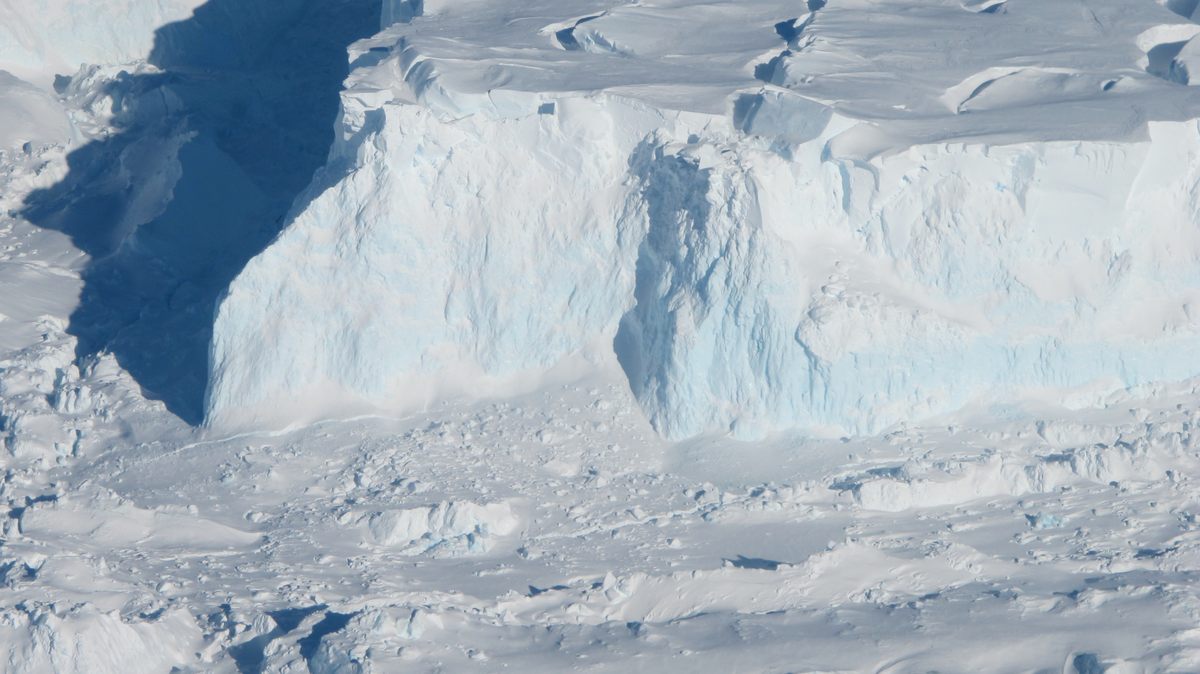
Thwaites Ice Shelf won’t live much longer, says Pettit: “I’m giving it five to 10 years.”
All of this highlights the urgency of documenting Antarctica’s exotic ice-dwellers while it’s still possible. “The information that we can gather now is unique information that will eventually disappear,” says Jeroen Ingels, who studies Antarctic marine ecology at Florida State University. “From a scientific point of view, that’s a great loss.”
Just how big a loss, and how soon, remains to be seen. And for now, at least, the process may be creating new habitat on the landward side of ice shelves, even as their outer edges melt.
“Everywhere we were looking this year had only been ungrounded for less than 10 years, so that’s really new terrain,” Schmidt says. During those early years, “the mobile stuff comes in and colonizes first”—the fish, the krill, and the anemone larvae. And this new habitat will itself disappear years or decades from now, replaced by zones yet further inland, as the ice continues to retreat.
Even in the absence of global warming, these ice-dwellers face a constant conveyor belt of doom that few observers appreciate—one that may prepare them, in unexpected ways, for the crisis of climate change.
The anemone colony that Zook discovered in 2010 sat just five miles back from the front of the Ross Ice Shelf. That ice is advancing northward, roughly half a mile per year, as glaciers push it forward. Sometime around 2030, predicts Scambos, the outer 10 miles of the ice shelf will break off and form an iceberg—just as it does every couple of decades—and the anemone colony on the berg’s underside will go for a ride. This wide, flat tabular iceberg (unlike the narrow bergs formed when an ice shelf disintegrates) will likely remain intact, without capsizing, for several years as it drifts along the coastline. The critters on its underside could survive for some time.
In that case, says Convey, “you can imagine that an iceberg is almost like a watering can,” scattering the larvae of anemones and other ice-dwellers along the coast as it drifts. A few larvae might drift under ice shelves and spawn new colonies.
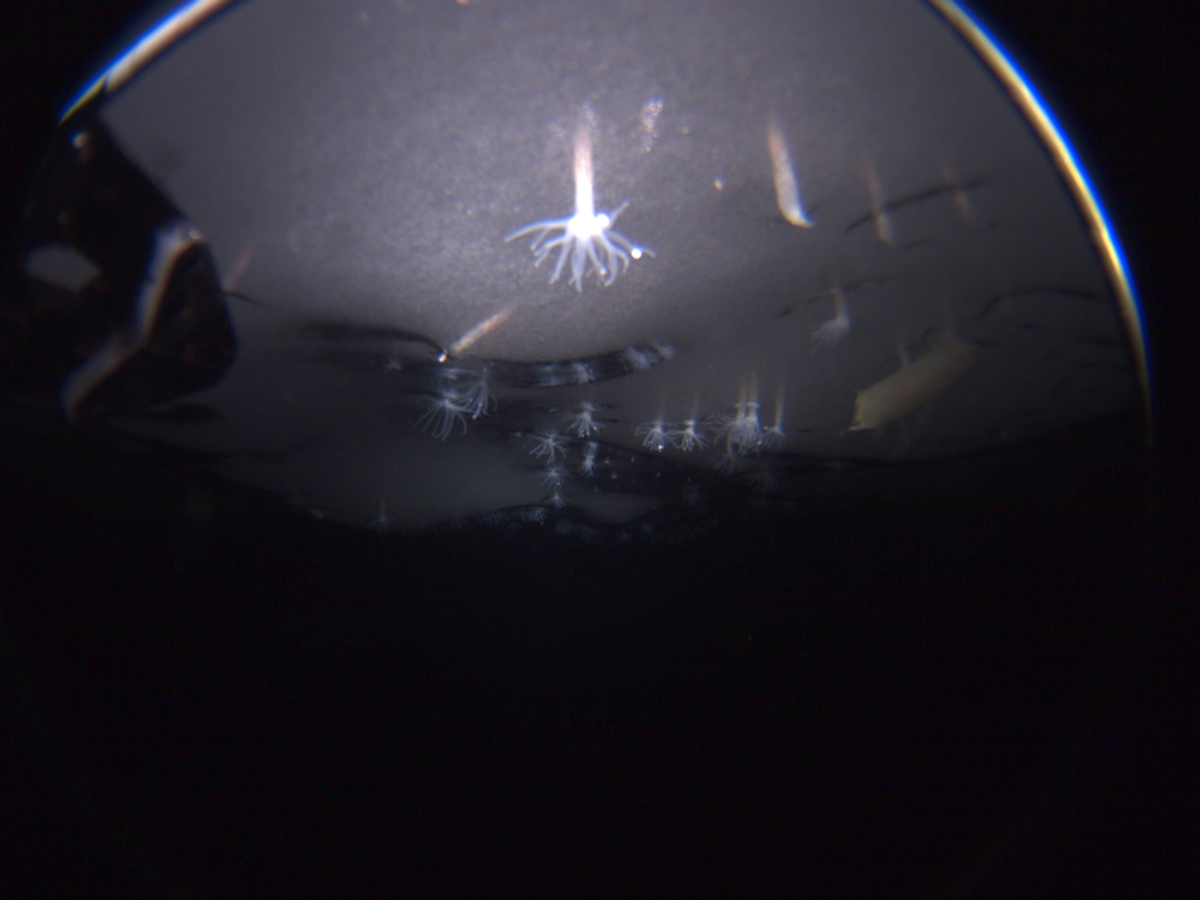
No one knows if this actually happens, but it could potentially be one of many evolutionary tricks that these animals have used to survive repeated cycles of slow-motion catastrophe.
Antarctica, after all, has seen at least 38 glacial cycles over the past five million years—38 expansions and contractions of its ice. At times, the entire West Antarctic Ice Sheet vanished, leaving a shallow sea in its place—a situation likely to recur if the climate continues to warm. Under that scenario, the large ice shelves would shrink or disappear entirely, and parts of the new coastline further inland could come to resemble present-day Alaska, with a few tidewater glaciers pouring out through gaps in the mountains, dumping small, irregular ice fragments into the ocean. The amount of floating ice available to the anemones would plummet. And yet, the anemones might survive, as they have in the past, by sending a few larvae from one ephemeral ice raft to another—entire colonies dying off as small, vestigial ice shelves disintegrate—while new ones take hold in other spots.
These animals are tenacious survivors—but also incredibly fragile, their future uncertain. Their uncanny talent for living in ice actually confines them to a dangerously narrow space: the width of a couple degrees. It’s the same range we hear so much about when it comes to global warming—the shifting, precarious zone between freezing and melting.
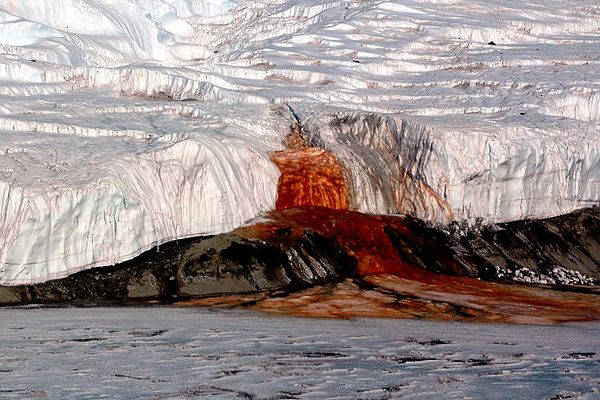



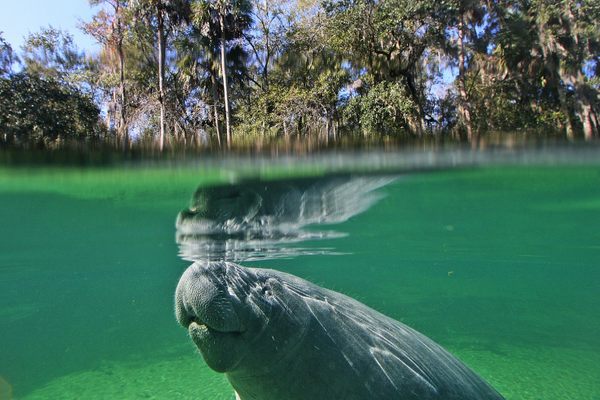

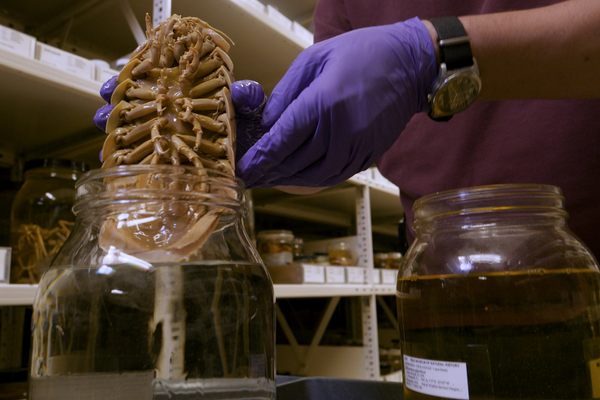










Follow us on Twitter to get the latest on the world's hidden wonders.
Like us on Facebook to get the latest on the world's hidden wonders.
Follow us on Twitter Like us on Facebook